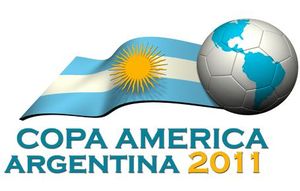By NESTOR F. SEBASTIAN
The tournament that essentially inspired the World Cup had been watered down.
Little by little, Copa America had lost some of its prestige. CONMEBOL decided to implement a two-year cycle in the South American tournament in the mid-1980s to give each nation a chance to host the competition.
It slowly began to suffer a little more than a decade later when players made the exodus to Europe to fully concentrate on their club careers and put their national aspirations on the backburner.
It happened even more after the globalization and increasing business output of the game climbed in the past 15 years or so.
At Colombia 2001, Argentina withdrew its participation after questions arose about Colombia's safety issues. Guests Canada disbanded its camp when CONMEBOL initially cancelled the tournament, leaving the continential governing body to scramble and bring in Honduras and Costa Rica at the last minute.
While Peru 2004 and Venezuela 2007 saw all teams participate without a problem, it did lack some top-name players, most of whom either were injured or took time off after grueling campaigns at their respective clubs. World Cup qualifiers, which were around the corner from both tournaments, obviously took precedence.
CONMEBOL didn't want to admit it, but it knew it had to act. As soccer continues to become more and more lucrative, the idea of Copa America coming around every two or three years gave the sense of oversaturation. Also, the idea of possibly competing or sharing the spotlight with the ever-increasingly popular European Cup was ludicrous. The result? CONMEBOL rightfully pushed back the continental contest back to a four-year cycle, beginning with this year's edition.
And it's appropriate that it is taking place in Argentina. The first tournament was held there in 1910 to commemorate 100 years of the May Revolution, which marked the beginning of Argentina's independence although the first competition is not recognized by CONMEBOL. Officially, the first South American championship took place in 1916, also in Argentina.
The country has a passionate culture, and its supporters are world-renowned. The concept of holding Argentina's first senior official tournament after 24 years most likely seduced federations and administrators as well as players themselves, given the numerous interviews in the past several days.
There is a real sense of anticipation and anxiety that hasn't been felt in years. Some managers have admitted that this could be the best Copa America edition in a long time, given the atmosphere and tradition known in Argentina.
It's been a long four years since Brazil lifted the trophy in Venezuela in 2007 and about a year since the successful showing by South America in in the 2010 FIFA World Cup in South Africa. CONMEBOL's World Cup qualifiers start in October, and many teams recognize that a positive display this month in Argentina will give tremendous momentum to its respective teams, fans and press, especially with an extra spot to dispute since Brazil won't have to qualify for 2014.
This year, about 3,000 press credentials have been recorded for Copa America. Every side — except for guests Mexico and Costa Rica — have deployed full-strength teams. Most games have been sold out for weeks. Many outlets will broadast the tournament around the world. YouTube announced it will stream the games live. And best of all, fans will finally get to enjoy a top-tiered cup competition that deserves that respect it's been lacking for a long time.

